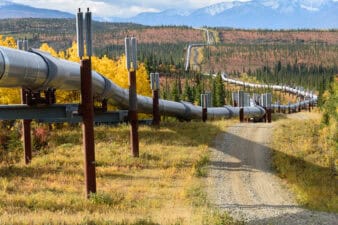Like a lot of oil and gas companies, Pengrowth Energy Corp. (TSX:PGF)(NYSE:PGH) has limited financial flexibility right now due to low oil prices. That’s a concern because the company has looming debt maturities that need to be addressed at a time when the credit markets aren’t that open for energy companies to refinance their debt.
Because of that, the company is in a race against time to come up with the cash it needs to get ahead of these maturities before they come due.
A big wall in 2017
As the chart below shows, while Pengrowth doesn’t have any debt coming due this year, it has a huge debt maturity wall to overcome in 2017:

Combined, the company has $537 million in debt maturing in 2017 that needs to be addressed, including $400 million in long-term notes and $137 million in convertible debentures. On top of that, it has another $280 million coming due in 2018. That’s a lot of debt for a company that currently has a market cap of just $700 million. In fact, that debt is one reason why its market cap has fallen so steeply over the past few years; the stock down 91.6% over the past five years.
With oil prices crashing, Pengrowth no longer has the cash flow or access to the credit market to refinance that debt at acceptable terms. That has forced the company to take rather extreme action to preserve cash in order to get ahead of that maturity.
This has included slashing and then suspending its dividend, which will save it $250 million in cash flow over the next year. Likewise, it has reduced its capital spending from $904 million in 2014 to just $60-70 million this year. Despite all those cost reductions, the company only expects to generate about $280 million in excess fund flow this year, though that is assuming oil averages about $30 a barrel.
Adding up the options
Pengrowth’s plan right now is to use that excess cash flow (along with another $75 million in cash that’s expected to come in the third quarter, when the company plans to monetize some of its foreign exchange hedges) to pay down this debt. It hopes to make early offers this year to retire some of the term notes and convertible debentures on favourable terms, or at less than par. Depending on how successful it is in these early retirement offers, the company could address the bulk of this debt with cash on hand.
However, it’s not taking any chances that its creditors will take less than they’re owed, which is why the company is also pursuing plans to sell upwards of $300 million in assets this year. If successful, those sales, along with cash flow, could take care of nearly all of its near-term debt maturities.
If it’s not successful with asset sales, the company does have other options, albeit more costly options. These include tapping into its revolving credit facility to pay down the debt, or, more specific to its convertible debentures, it could extend the existing term or issue a new series of convertible debentures to address next year’s maturity. In other words, even if oil prices stay low, the company has a number of options to address its looming debt maturities.
Investor takeaway
While Pengrowth has a big debt wall to overcome next year, it has already taken a number of actions to position itself to address those maturities by significantly reducing its spending, so it can generate several hundred million dollars in cash flow. That cash flow combined with its other options should enable the company to address this situation even if oil prices stay low.
In other words, despite the wall of worry, Pengrowth looks like it will be able to survive this downturn.






